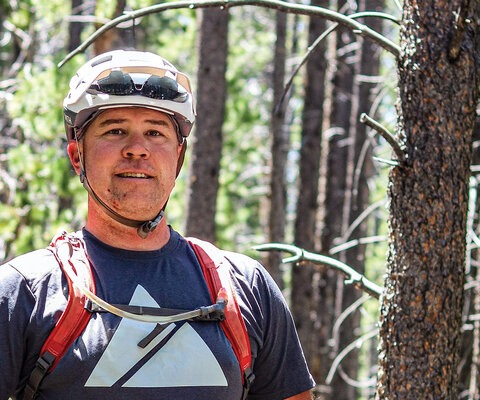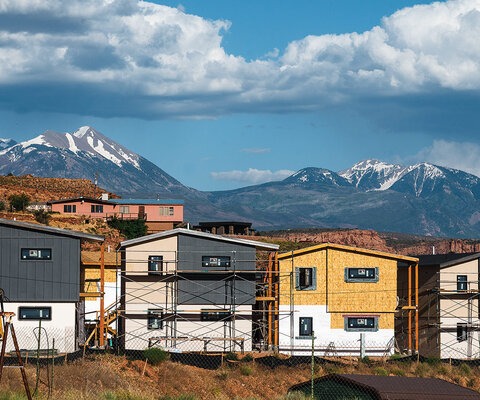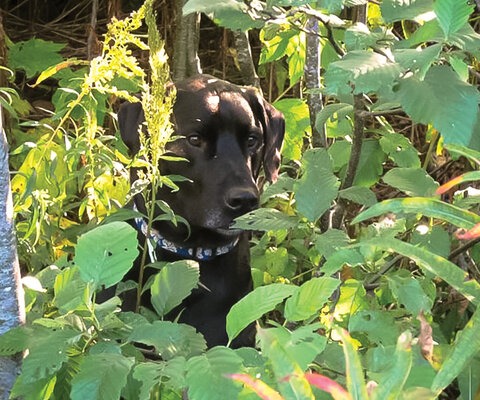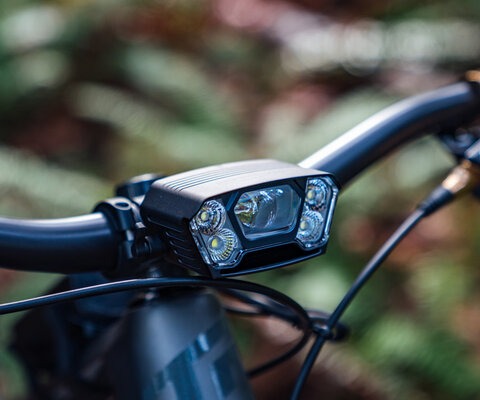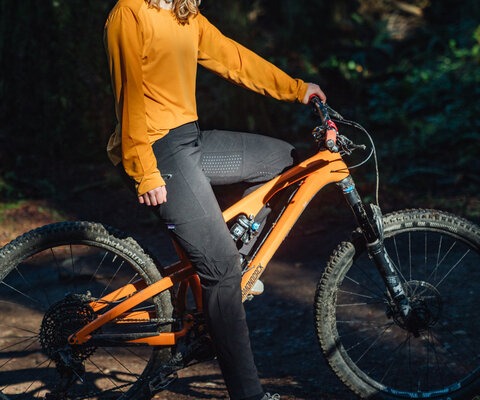
Community First Reviving an Ancestral Connection to the Land
Words by Ryan Stuart
It was 2012, and Patrick Lucas was working as a consultant, the liaison between First Nations in British Columbia and community development grants from the federal government.
“Lots of it was unsatisfying work,” he says. “I was the white dude flying in to a First Nations community to write a stupid, thick report no one was going to read.”
Lucas had gotten into riding while doing development work in the jungles of Laos, spending weekends exploring the backroads and paths linking indigenous villages. When he moved back to Canada, he started riding on Vancouver’s North Shore. Soon, mountain biking was all he talked about. It was his escape from a tough, often thankless, job.
“It was usually stressful work, so I’d go for rides on the way to a meeting or after,” he says. “Sometimes both.”
For years, he worked with the Boothroyd Indian Band, a small community a few hours northeast of his Vancouver home. When he’d show up at Boothroyd, there was always a bike on his car, and an elder in the community took notice.
“He asked me, ‘What do you know about mountain biking?’” Lucas remembers.
The elder pointed out that the kids of the community were always riding their bikes, building jumps out of any pile of dirt they found and stunts out of any wood they could scrounge or steal.
“We don’t want them to stop,” the elder said. “Can you help us build them a bike park?”

It took Lucas a few months to organize everything, but he made it happen and spent a weekend working with the kids to build the park. They built ladders out of 2-by-6s, a small pumptrack and a gap jump. The kids were elated and the elders relieved. Even though it was a seemingly small project, it had effects far beyond its size.
“For years, the Boothroyd always tolerated me, but I was always the guy they had to deal with to get the grants,” Lucas says. “That weekend the switch flipped. They started telling me their stories and where they wanted the community to go. They trusted me.”
“That weekend the switch flipped. They started telling me their stories and where they wanted the community to go. They trusted me.”—Patrick Lucas
It was the first time in all the development work he had done that Lucas felt he was actually accomplishing something. He was trying to figure out how he could help make a difference, and this was a huge learning experience. Building from that first bike park, Lucas has made a career out of partnering with small towns and First Nations communities to bring the healing power of two wheels and a track in the forest to the people who need it most. The resulting trails have altered people’s lives, changed their connection with the land, helped improve the health of communities and sometimes even the relationship between Canada and its indigenous people.
“I’m building trails, but that’s not what I’m really doing,” Lucas says. “I’m building relationships. Between me and First Nations people, between First Nations and nonindigenous communities, between youth and their territory, and with everyone’s relationship with the land. It took a lot of digging in the dirt for me to learn that.”
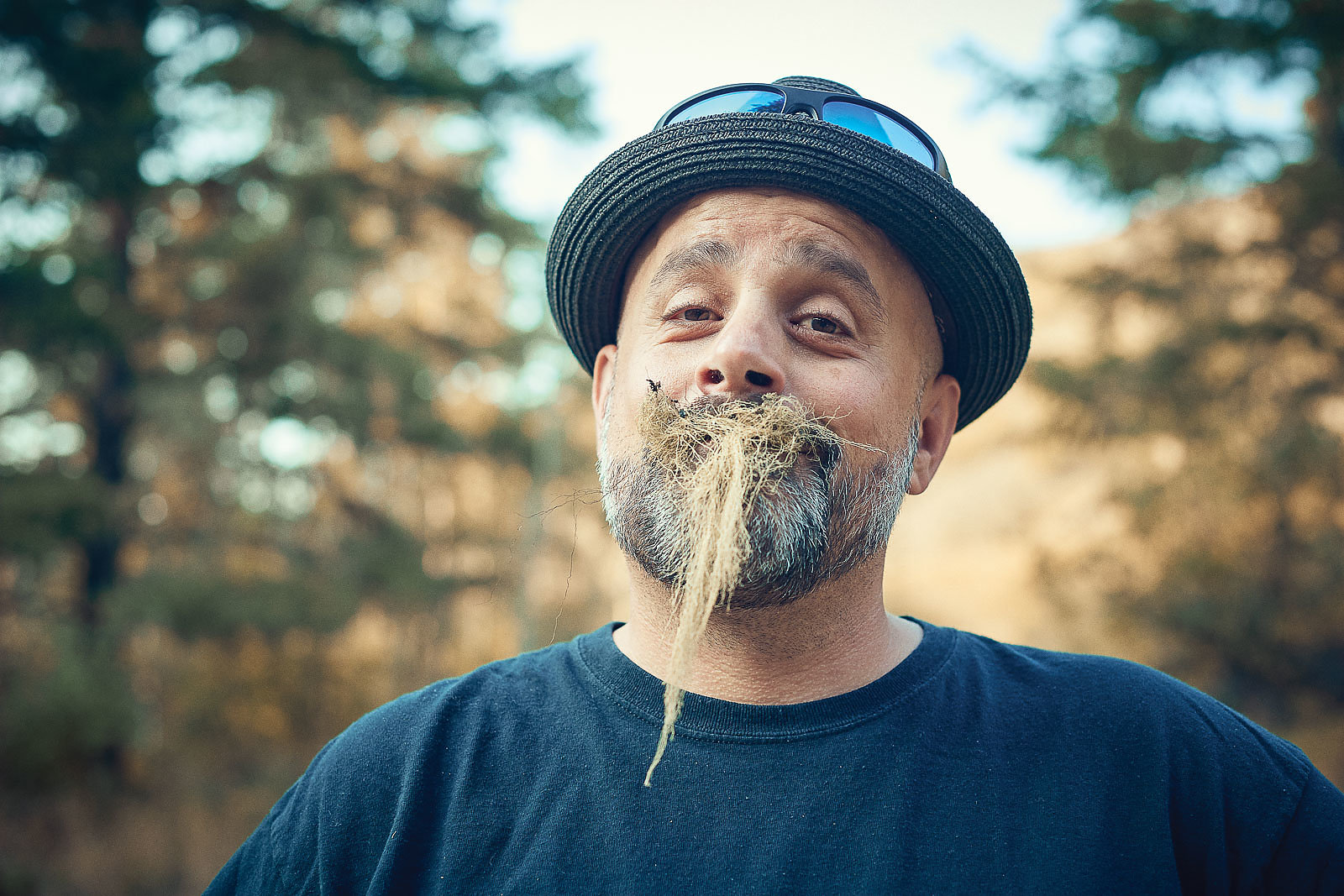
Lucas is telling me this over a beer at his local brewery. We live in the same town, and over the last couple of years we’ve shared a few pints, ostensibly for me to learn more about his work, but more so I could absorb his wisdom. Bespectacled, with a dark beard, often a fedora-style hat covering his close-cut hair and jotting notes in a well-traveled notebook, Lucas looks thoughtful, smart and very progressive—and he is. He can riff on the intricacies of cross-ditching a mountain bike trail or the colonial roots of Canadian laws. But what I’m most interested in is what Lucas can teach me about reconciliation.
Many Canadians and Americans (myself included) feel terrible about how our ancestors have treated First Nations people—and how we are still failing them. Every few months, another injustice emerges that speaks to our colonial past and the suppression of a group of people who have lived on and taken care of this land for thousands of years.
But, like a lot of people, I don’t know what to do or say to make it right. And as a guy who quite often rides trails in the traditional territories of First Nations, I’m guessing I actually make it worse. Amid all the confusion, Lucas emerges as the rare bridge between cultures. He’s someone who has found a path to do right by First Nations people.
Lucas’ journey began at the University of Northern British Columbia in Prince George, the hub of central and northern BC. An air force brat, he grew up all over the world, but mostly in Alberta, before settling into university out west. With many aboriginal students at the school, there was a weekly sweat, a traditional sauna-type experience with ceremonial importance, open to anyone—even a white kid. For a year and a half, while earning his environmental studies and community planning degree, Lucas went to the sweats.
“My goal was to listen and do whatever I was told,” he says. “Slowly, the group opened up.”
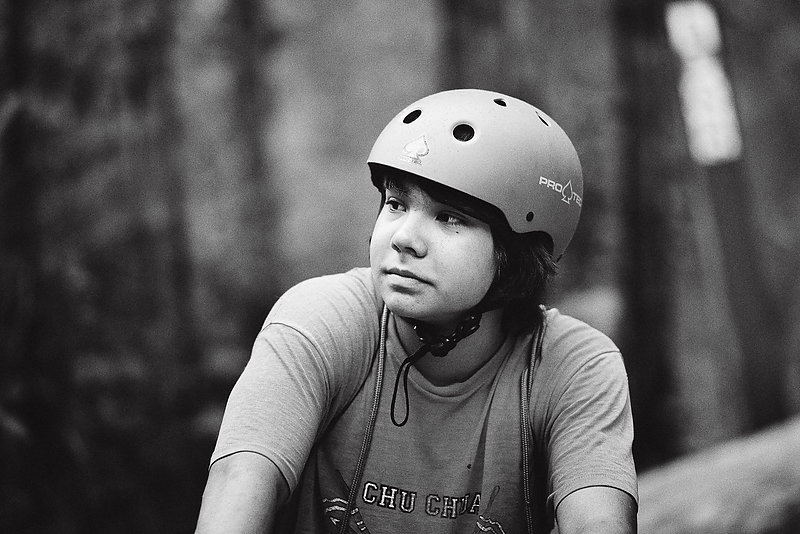
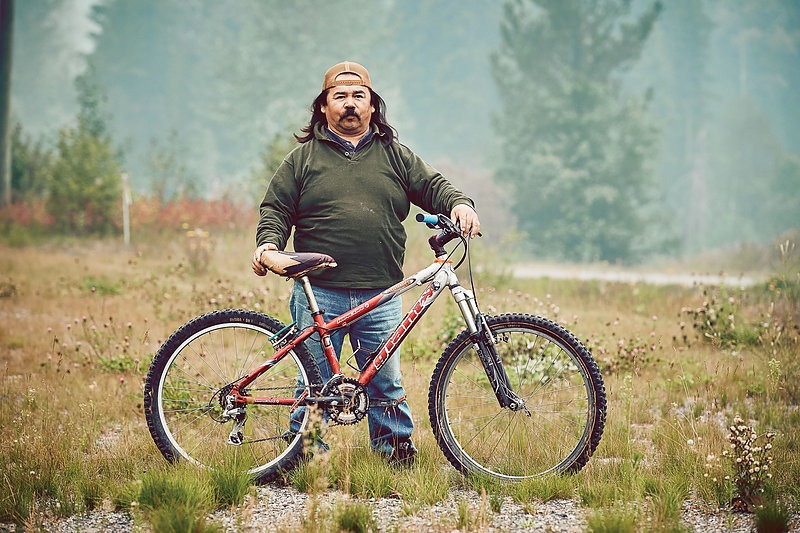
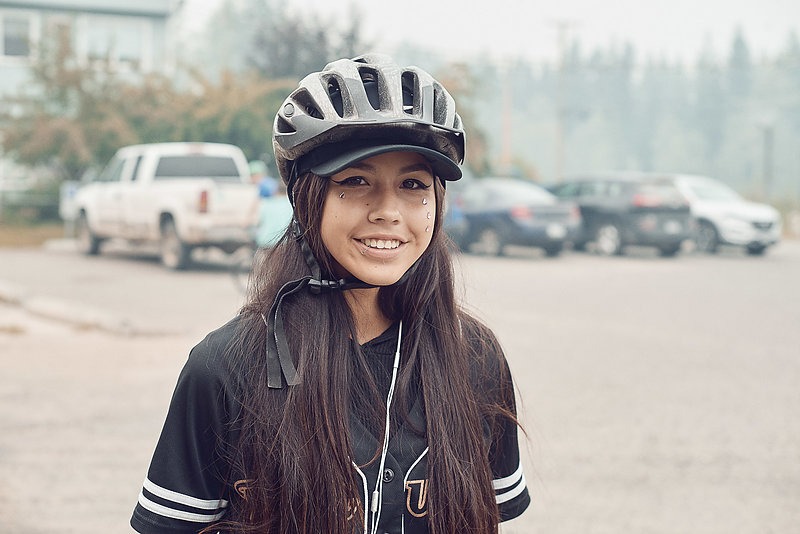
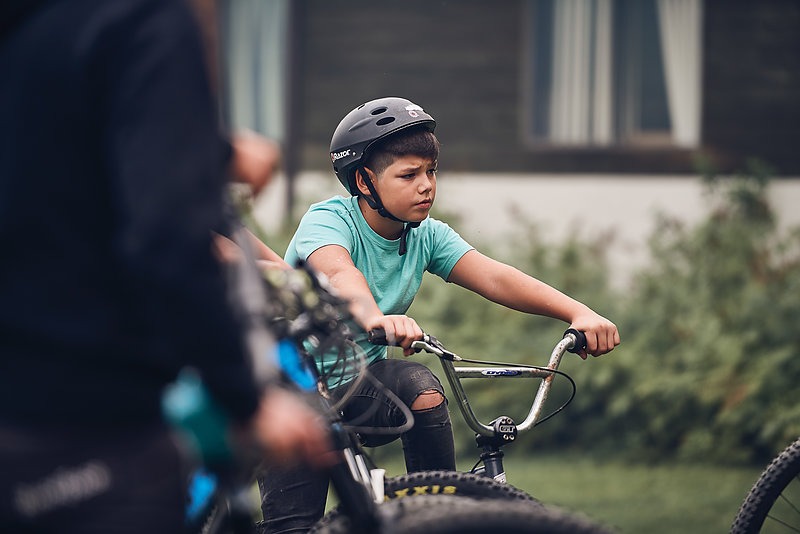
They talked about residential schools, a system that forcibly removed aboriginal kids from their homes and families for distant boarding schools, where teachers often beat their language and culture out of them.
They told stories about the government penning them in reserves, taking their land and treating them like children, or worse. They remembered incidents of racism, neglect and police ignoring their pleas for help as hundreds of First Nations women went missing. And he heard a lot about the desperation of elders for the health of their people, especially their kids; poverty, addiction, sedentary lifestyles, obesity and diabetes are persistent issues.
Lucas emerged from university more awake than most to the hard realities of being aboriginal in Canada, but he still had more learning to do.
After the success of the Boothroyd bike park project, Lucas founded the Indigenous Youth Mountain Bike Program in 2013. It had a simple goal of getting youth on bikes, reconnecting with nature and living more active lives. It was well received, except for one problem: On most reserves, there was nowhere to ride.
I first met Lucas when I had the exact opposite concern—too many riding options. I was preparing for a mountain bike road trip along BC’s Yellowhead Highway. When I was having trouble narrowing down where we should stop, someone suggested I give him a call for ideas.
“You have to go to Simpcw,” he insisted. “The trails are amazing. Go for a ride with Tom.”
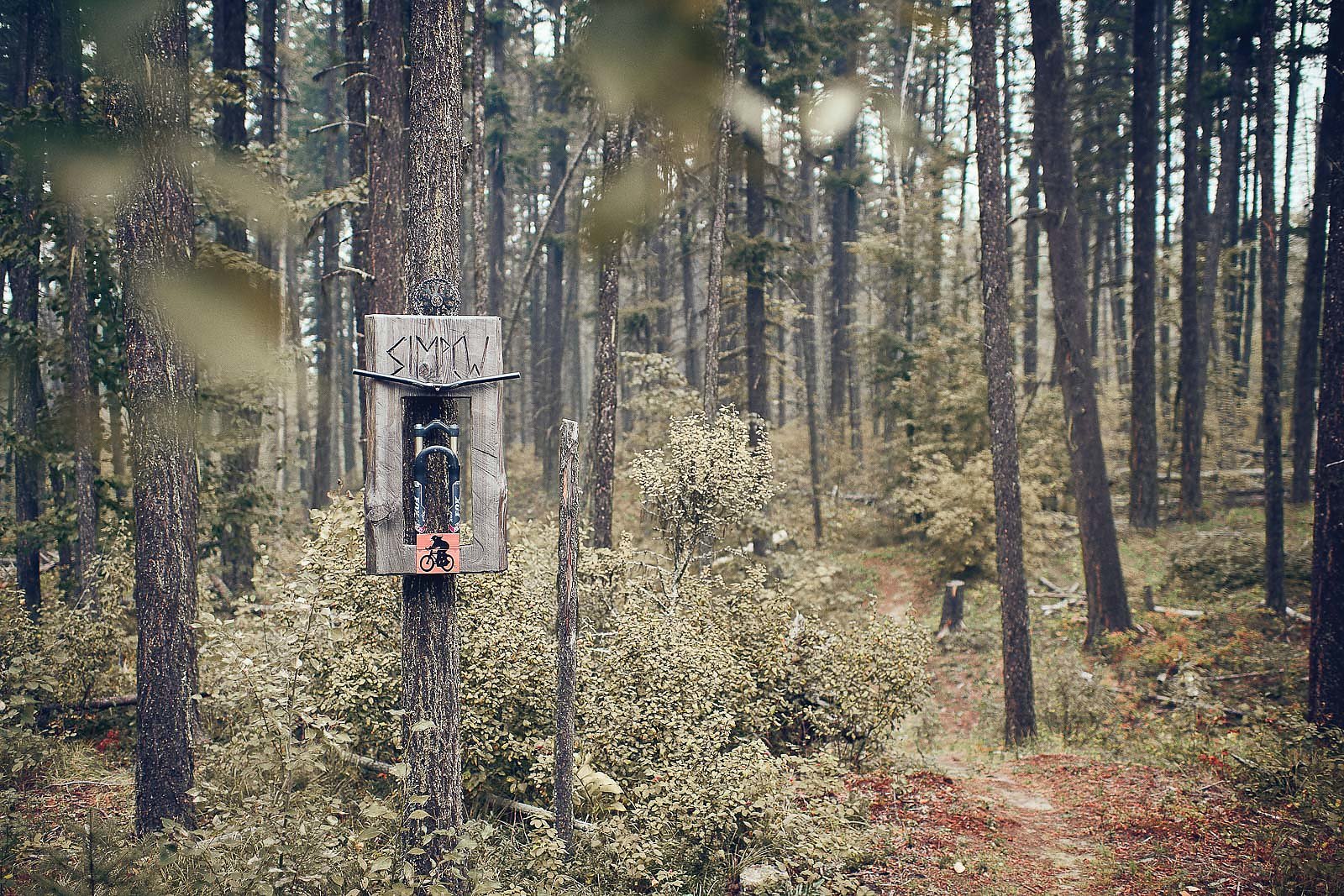
I’d never heard of the place, but it was on our route. So, an hour north of Kamloops, in BC’s interior, we pulled off Highway 5 and bumped down a gravel road to the Simpcw First Nation. Half an hour later, I was huffing up the Fish Trap trail, struggling to hold Tom Eustache’s back tire, as he easily narrated the history of the area’s trails.
“Originally, we built them because we wanted to go for a ride without having to drive to Kamloops,” he says over his shoulder as we punch up a short climb and into a dark forest of pine and spruce trees. “We only built them with us in mind. It was selfish.”
Eustache is the Simpcw’s maintenance manager, a job that now includes the building and upkeep of a growing singletrack network. Eustache had come to mountain biking as a way of killing time while his son Skylar, a competitive swimmer, trained at a Kamloops pool. By the time Skylar quit swimming, Tom was hooked, and riding became their shared pastime. Soon the duo started building trails on the hillside above their village’s community center/school/ band office. At the time, the community was predominantly sedentary and had high rates of obesity and diabetes.
“No one was out on the land,” Eustache says. “Few people were exercising.”
Meanwhile, Lucas had done a couple of other trail projects with First Nations, but something didn’t feel right about his approach.
“I was still stuck in the idea that I was the outside person coming to save them,” he says. “I think playing that role enables us white people to feel less guilty about our colonizing past, but it’s inherently wrong.”
Eustache invited Lucas to Simpcw to teach a trailbuilding workshop. A few hundred meters of trail later, Lucas had a new idea of how to do his job.

“Working and talking with Tom, I got to the point where I realized they didn’t need me. They were already building trail,” Lucas says. “Once I was able to drop my pretenses, I was able to just go for a ride with him, build trails with him and become an accomplice to what he was doing.”
Lucas was working with them, not for them—or that’s how Eustache puts it. Lucas was also incredibly patient and honest throughout the process. His collaborative approach changed the dynamic of their relationship. Eustache had his own epiphany about Lucas, too.
“Patrick taught me how trails can impact a community,” Eustache says. “We started looking ahead, beyond ourselves, to how we could help our people. Since then, everything we’ve built has been multi-use. We always put someone else ahead of our mountain biking desires.”
“Patrick taught me how trails can impact a community. We started looking ahead, beyond ourselves, to how we could help our people."—Tom Eustache
This approach certainly hasn’t impacted the riding, though. Eustache leads me up the trail network, weaving through big conifers and long grass, climbing steadily but easily. We pop out of the woods into a meadow and bask in the sun. The trail is fast and smooth. It’s the kind of carefully built path that feels almost effortless and interesting—one anyone could enjoy, regardless of ability.
That was the goal of the Chu Chua Trail Network—to benefit the community first. Lucas helped secure funding through grants, while Eustache assembled a trail crew of youth from the community, including Skylar. For most, it was their first job. Skylar’s now a full-time trailbuilder and others have used the experience to get jobs in forestry and wildland firefighting. Six years later, they’ve built 10 miles of trail.

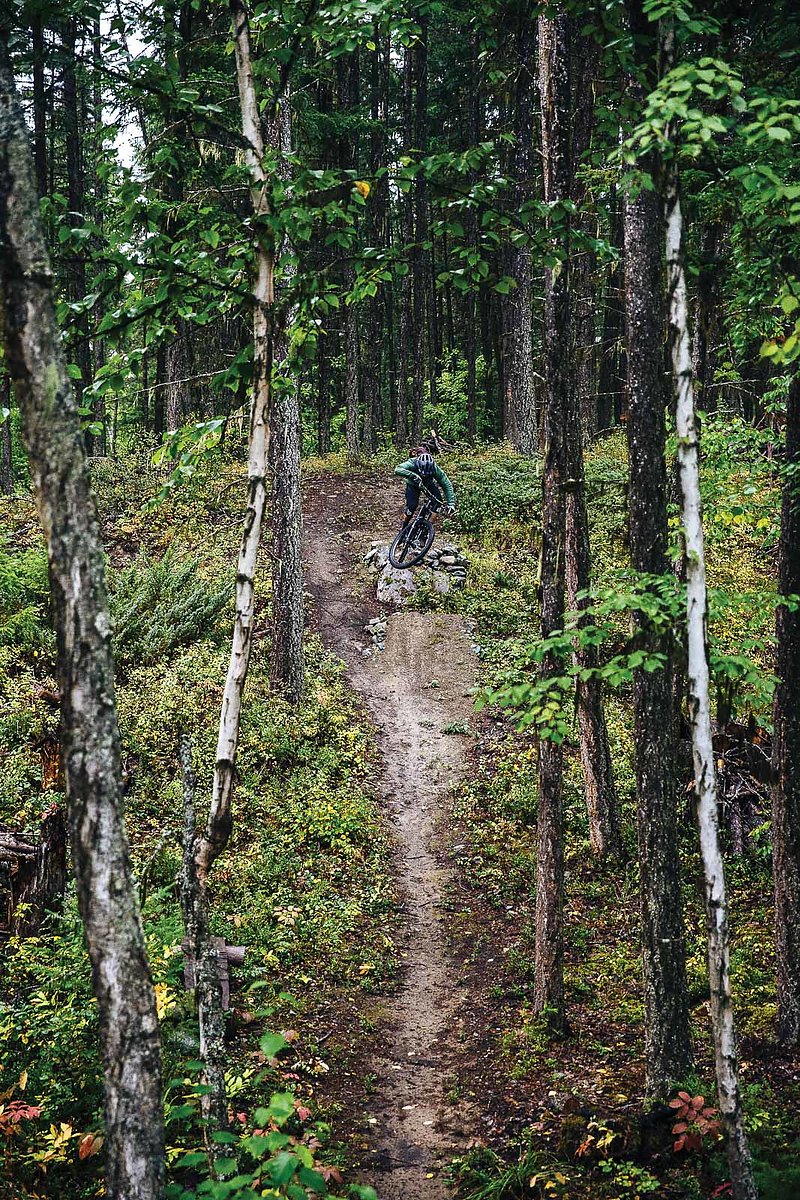
Their impact has far exceeded Eustache’s expectations.
“It just snowballed,” he says. “One person went for a hike on the trails and they told someone how great it was and then they went and told someone else.”
Soon, a running group formed, and then an exercise group. There were people who lost 50 pounds or more. Eustache started a youth mountain bike program and bought a fleet of bikes. The nation’s health department started funding trail maintenance and purchases, like bike helmets for the kids. And it renewed and strengthened the community’s connection to its territory.
“People in the band always talked about getting back on the land,” Eustache says. “Traditionally, that was hunting, but we’re adaptable people. Our kids are riding bikes anyway. They might as well get to know their land while they do it.”
Word got around about the success of Boothroyd and Simpcw. Soon, Lucas was fielding calls from First Nations across the province wanting to build their own trails. He quit his job in 2015 and set about partnering with First Nations across British Columbia. He’s since worked with dozens of groups.
In every community, he’s watched the trails shift something in people. Sometimes, it’s as subtle as a smile after a lunchtime walk in the woods. Other times, it’s dramatic, like watching a diabetic walk off 180 pounds in a year so doctors will replace his knees instead of amputating his feet. The Red Cross acknowledges the impact of his work, too; after forest fires devastated First Nations trails in 2017 and 2018, the organization helped fund trail rehabilitation efforts.
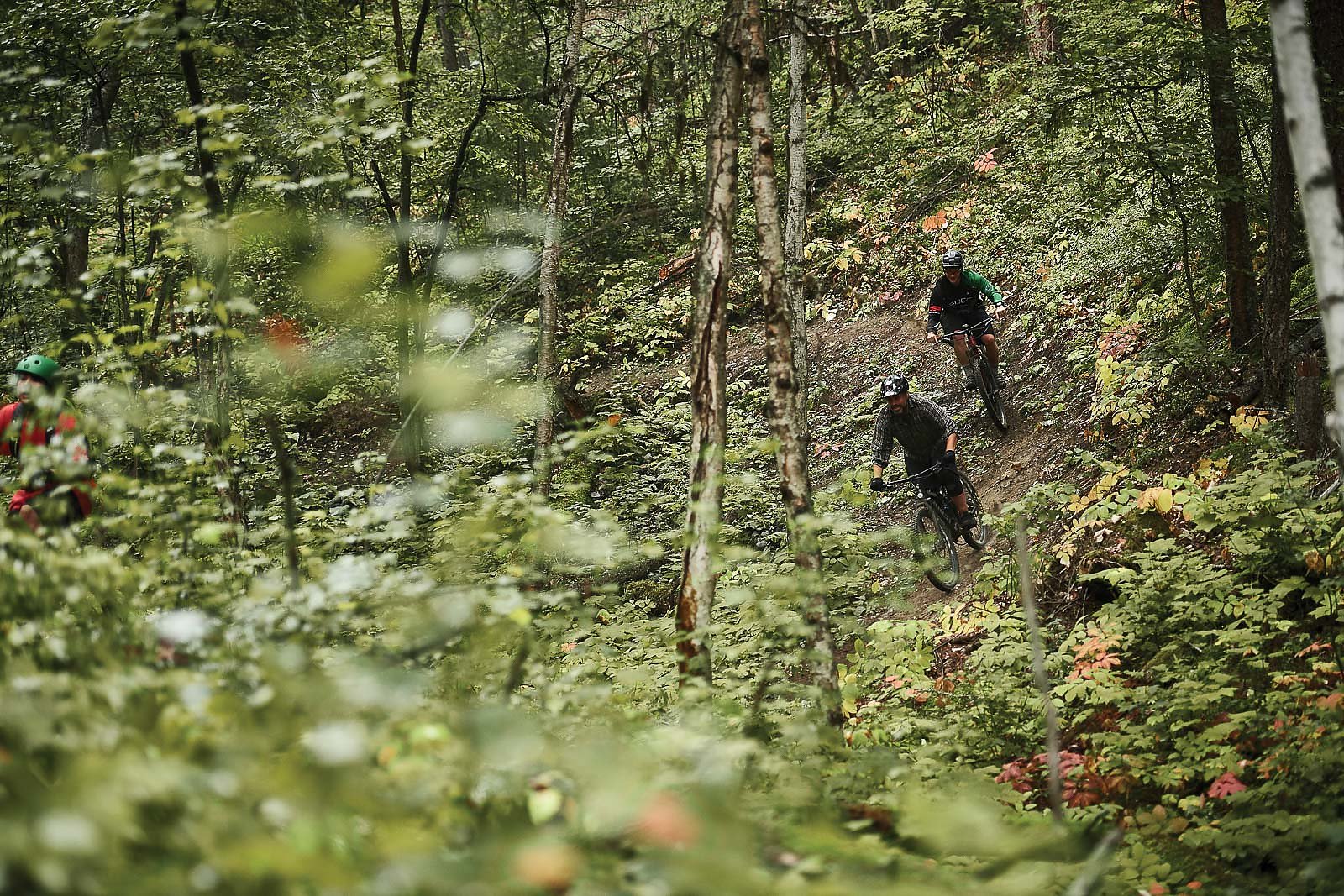
“First Nations communities are looking for a change,” Eustache says.
They are looking for something for their youth to do instead of drugs. They’re looking for somewhere for the elders to walk so they don’t become obese. And they’re looking for ways to reconnect with the land instead of sitting in front of the TV. Even Eustache, who never exercised before he discovered mountain biking, credits the trails with his own health improvements.
“The kids spend a lot more time outside than before,” he notes. “The trails did that. That’s huge.”
On our ride, he and I have reached the hub of the trail network. He stops to point out an outdoor classroom he built for the community school. Shortly after, we reach Step it Up, a favorite among the kids, so we turn down its snaking path. It swings through the dark forest, twisting around thick trunks, tracing ridgelines and plunging into gullies, before flying back up the other side on its namesake features. The dirt is tacky. The trail is flowy. The air is cool. We’re grinning and laughing when we pop out at the bottom.
Months later, back at the brewery, I tell Lucas how much I enjoyed his work. He nods and then tells me about his own recent trip to Simpcw. Eustache had insisted that Lucas visit on Orange Shirt Day, an annual nationwide event remembering the tragedy of residential schools. The two rode up Fish Trap trail to the midpoint hub to find the outdoor classroom full: Elders were telling the kids stories about residential school.
“It was really powerful,” Lucas says. “I realized that’s what it’s all about. Those trails helped create that opportunity to share. Tom knew what he was doing. He invited me on that day so I could see the impact those trails were having healing his people. And he let me help build those trails so I could play a small role in reconciliation.”
